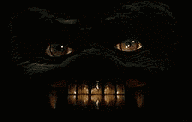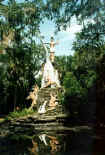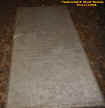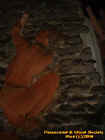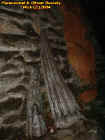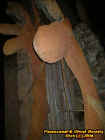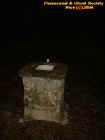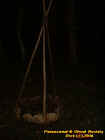|
|
||
|
Along the Tomoka & Halifax rivers lays a peninsula surrounded by rich lagoons, a barrier island, basins and 1000s of acres of forest which was a very well hidden area used by the Timucuan Indians. This area would protect them from hurricanes and other threats. This Indian village was called Nocoroco and is said to date all the way back from the late St. Johns period or prehistoric times. A Spanish explorer Alvaro Mexia in 1605 documented this Indian village on his travels and it is said this was one of the last Timucuan strong holds as many other tribes near the St. Johns river were being forced off there lands such as the ones in the Blue springs area. Near the village lies the Strickland Mound and other smaller mounds which contained coquina middens and many burials. There was also some pottery and other artifacts found that date back to the middle Archaic period. So the site here is extremely old long before even the white men settled here these mounds and such were built. When the Spanish explored here they were infatuated with the sized of the Indians that roamed the lands. Since there were over 90 species of fish in the Tomoka river and many different species of animals the native American people were able to hunt, fish and eat very well. Thus they were a foot taller then the Spanish Explorers some called them giants. The Indians were so advanced here they even grew there own crops and stored them in a communal storehouse. Near the village which we did not find is the Tomoka Stone which was a fused stone like mass of coquina shell, Orange Fiber Tempered pottery, shark's teeth and animal bones. This is how it got its name the Tomoka Stone. Since the stone lays in a lower level area of the Nocoroco village the rising sea levels cause it to become submerged. But archaeological finds have found animal and plant remains preserved within the Coquina stones that indicate the Indians lived off the land year around and that it is a prehistoric site. Another site that sits very close to the village is the Chief Tomokie Statue and perhaps this is the most famous landmark where so many visit just to see this. Through the years it has become weathered and was built out concrete and sand. However due to the Florida heat the statue has developed fractures that have caused expansion. The statue was vandalized by some drunken campers who knocked a couple heads off the statues. The monument was to commemorate the mystical Chief Tomokie. I believe that this monument was designed in the 1930s. Now in front of the Chief's statue is the Tomokie Fountain which was sculpted by Dana Marsh of Ormond Beach. The warrior chief depicted within the fountain was rumored to have refused to abide by certain religious practices of the Timucuan tribe. The warrior chief drank out of the sacred spring which is located somewhere near the village so they fought and killed him. Some say the legend is untrue others say it was a myth so that the fountain could have a story to it. Dana Marsh who designed the fountain also built a grand ocean front home in the 1930s which looked like an ocean liner. Today that home is now part of the Embry-Riddle Aeronautical University. Then lets say if you were to hike down one of the trails leading away from the village you would take a dark path in the woods with many twist and turns for a half of mile. Upon a clearing is a well known site called the Addison Tomb quite odd since it sits in the middle of the woods near a museum which was built to house the Sculptures of Fred Dana Marsh as well as some native American artifacts from the Nocoroco Village. John Addison in 1816 settled a plantation of 1,414 acres and its name was Carrickfergus which was named after his birthplace in Ireland. The plantation housed 67 slaves and much of the crop grown here was Cotton which was common in the area. In 1825 Addison passed away and his brother Tom took over which died a few months later strangely like much of the plantation owners. John Addison was buried near his plantation till the tomb became vandalized and was moved to Tomoka. What stood out about his plantation is the long 135ft sugar mill which was the largest on the east coast of Florida. Today the ruins near Tomoka remain hidden which we were not able to find. Perhaps the biggest change to the Nocoroco village took place when in 1764 a man by the name of Richard Oswald was London was granted 20,000 acres of land by Gov. James Grant. Much of the land had been cleared including where the Timucuan fished, hunted and lived off of the lands. Which would cause the tribes to migrate to other areas but some were just brutally murdered. The Mount Oswald plantation had many frame houses built for the white plantation employees which the settlement was called Ferry. Then the plantation itself had a mansion, overseer's house, huts for 175 slaves, a sugar mill, barn, and stables. Sugar cane, Indigo, Rice and provision were planted here. The first Overseer here was Samuel Huey which later was replaced by an Indian named Johnson most likely a Timucuan one who once lived off the lands of Nocoroco. Strangely enough Oswald did not live on his plantation but rather in London. He did assist Benjamin Franklin, John Adams, John Jay, and Henry Laurens in drafting the Paris Peace Treaty to end the American Revolution. He also was a Commissary General during the Seven Years War. The plantation eventually was passed to his agent James Darley which sold it to Marquis De Faugeand. Unfortunately later on during the second Seminole war this plantation was burned to the ground and all the fields which once grew crops had been consumed by Tomoka once again. The unfortunate part is that we were not able to find no ruins or remnants of the Oswald plantation some say they are hidden in the woods and overgrown. Steve one of our investigators said he was boating in the Tomoka area once and found some ruins only accessible by boat in the swamp perhaps this is the Carrickfergus or Oswald plantation remnants. In 1918 the park was opened to the public as a five-acre Sunset Park which was developed by E.J. Mills. It featured a two story hotel, palm, garden, lunch and tea rooms, pavilion, canoes and a dock. Today there is a museum, restaurant, camp ground, trails, canoeing and many different ecological sites. You could probably spend hours just walking down Tomoka's sandy roads. Not much remains of the Indian village called Nocoroco but near the Addison Tomb outside is two remnants of the past/ Over the last few months many members convinced me to check out the Tomoka region so many have told me alot of strange things go on up in these woods. I hear alot of ghost stories and of course what is well known across the state of Florida would be the legendary Ormond Lights or another wards Ghost Lights. The legend states those that go out looking for them sometimes do not come back. Many people will drive down the road near Tomoka and shut there head lights off just to get a glimpse of the ghost lights which flicker through the woods and moss hanging off the trees. They say that the ghost lights are only seen near Tomoka however when I investigated Bulow which sits on the other side of the Tomoka River I did see these balls of light and yes I can tell you very much so that this is a real phenomena. Some scientist say that the lights are caused by swamp gas or phosphorous lights from algae growth but based on the size of these balls of light they are most likely more paranormal then earthly. There is a story about a Native American warrior who was going to visit the princess of a neighboring chief his father had forbidden him not to leave the tribal camp. The warrior was determined to see her so he set off into the darkness with a lighter knot torch. He set off in the wildness and never returned. Some say that his ghost haunts the woods of Tomoka. But we must ask ourselves what really happened to the warrior did he become lost or did something else get him in those woods. There is another story that a biker was riding down the long stretch of wooded road when the ghost lights ran him off the road. He hit an oak tree and was killed. Some say that some nights you can see a ghostly headlight of a motorcycle can be seen following you down Old Dixie Highway. Then we have perhaps one of the more eerie stories about a newlywed couple that just got married. They were driving through the area at night since it was there honey moon. The car mysteriously broke down so the husband left his wife and the car and went to go look for help. He did not return and the wife left the car to go look for her husband. The authorities found the car but the couple came up missing in the area. Perhaps this is one of the most tragic stories and mysterious. But then there are stories about campers who see the ghost lights throughout the forest at night. The area is also well known for its strange automobile accidents and many many deaths have occurred on this road. I have heard of cases even of deaths inside Tomoka. Every so often you will read of stories about bodies being found out in the woods or floating along the lakes or Tomoka Basin which is huge. There are alot of giant alligators and swamp lands here despite its a state park many area remained very desolate and unexplained flourishing with ghost legends, strange occurrences and history.
Rick-AngelOfThyNight
|
||
|
|
||
|
In accordance with Title 17 U.S.C. Section 107, any copyrighted work in this message is being distributed under fair use without profit or payment to those who have expressed a prior interest in receiving the included information for non-profit research and educational or criticism purposes only. Notwithstanding the provisions of sections 106 and 106A, the fair use of a copyrighted work, including such use by reproduction in copies or phone
records or by any other means specified by that section, for purposes such as criticism, comment, news reporting, teaching (including multiple copies for classroom use), scholarship, or research, is not an infringement.
|
||
|
|
|


